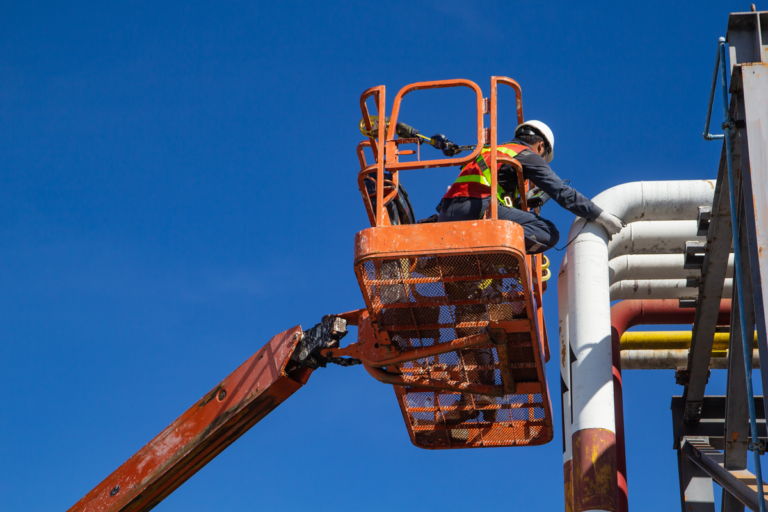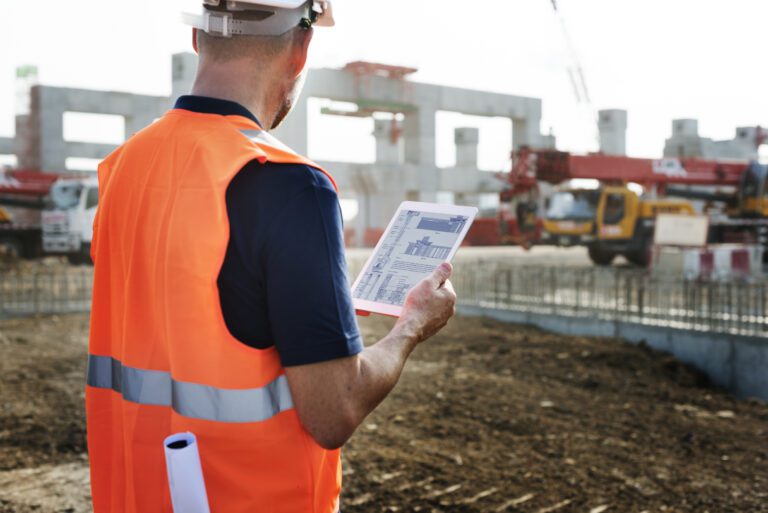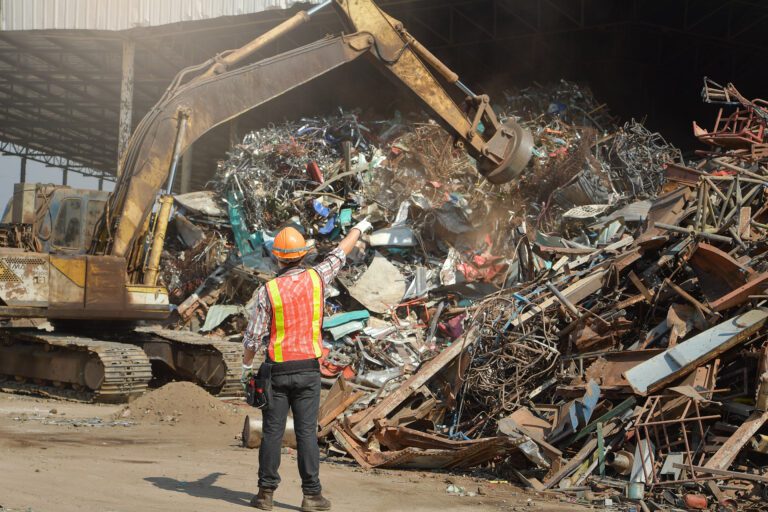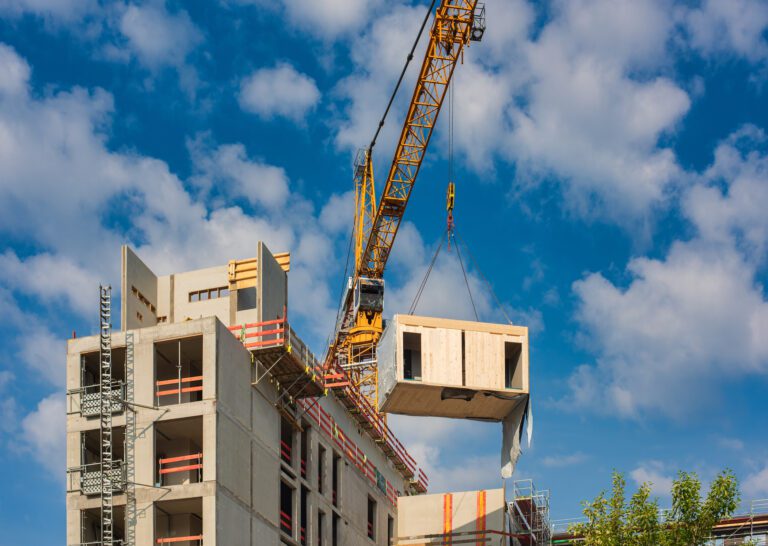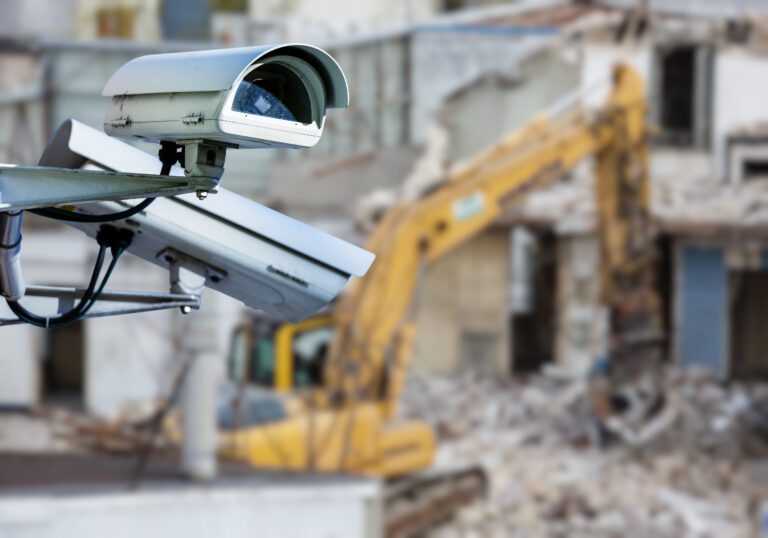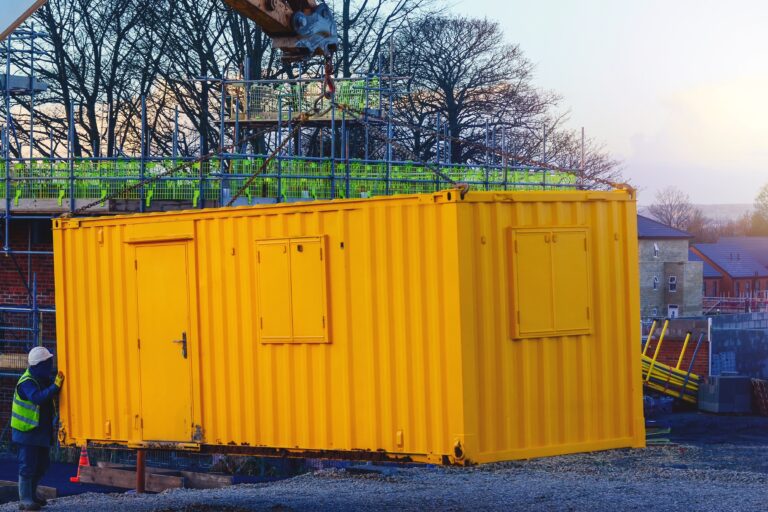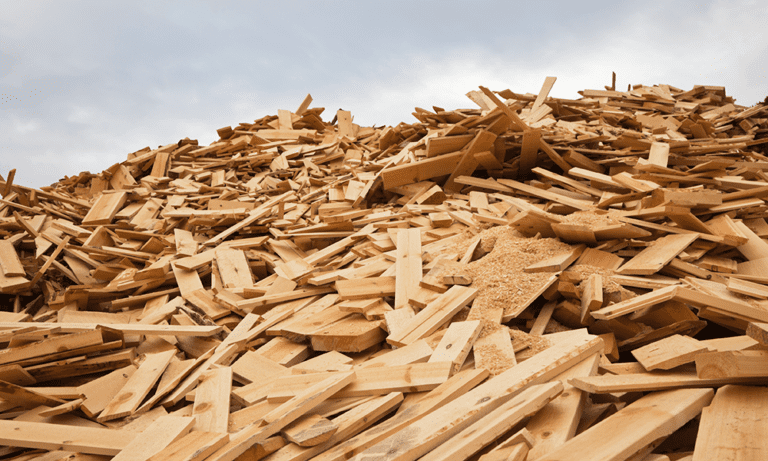16th November, 2021
Ladder Hire: Health and Safety Tips to Keep Your Team Safe
Ladder safety is very important to ensure employees do not experience a fall or injury when working at height. We explore health & safety tips to keep your team safe.
In many construction jobs, employees will be working at height. Whether it’s tiling a roof, fixing lights, decorating, or carrying out repairs and maintenance, there are lots of tasks which require an employee to be elevated from the ground.
This includes working from a ladder which is one way of allowing workers to access hard to reach areas. In this scenario, there is the possibility of injury if correct safety measures are not put in place.
Even a fall from a small height can lead to serious injury so it’s important safety precautions are understood and followed. According to HSE, working at height remains one of the biggest causes of fatalities and major injuries.
Ladder safety is key as it ensures both you and those around you are kept safe and secure. In this blog post we’ll explore a range of health and safety tips relating to ladder hire as well as the different types of ladders available on the market.
What Does the Law Say About Ladder Safety?
All workplaces need to comply with the Work at Height Regulations (WAHR) regardless of whether you’re a factory owner, project manager, or contractor. It is your responsibility to protect your employees and to mitigate potential hazards.
WAHR states that business must ensure:
- All work at height must be properly planned and organised
- Anyone working at height it competent
- The risks involved in working at height are properly assessed, and the appropriate equipment is selected and used
- The risks of working on or near fragile surfaces are properly managed
- The equipment used for working at height is properly inspected and maintained
By following the above procedures you can start putting a system in place to protect your employees from danger.
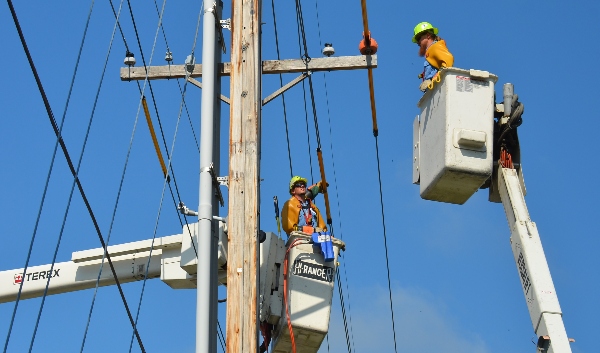
Ladder Hire vs Mobile Elevated Platforms: Which Should I Choose?
Ladders can be particularly dangerous when working at height as they need to be rested on a stable surface.
This contrasts with mobile elevated platforms (MEWPs) such as scissor lifts and boom lifts which have a wider, flatter base. As a result, this makes them more sturdy meaning they can be rested on uneven ground without worrying about them tipping over.
MEWP’s are also much larger pieces of machinery and therefore have a greater weight capacity. This means more employees can work at height at the same time to complete the job quickly. In contrast to ladders which require a worker to use their hands, MEWP’s allow both hands to be free in order to complete more complicated tasks.
Furthermore, they have further reach and can extend to greater heights which makes them very versatile. However, ladders are the obvious choice for working at height if the space cannot accommodate a MEWP. In addition, ladders are very useful for a short duration of time when the risk is considered to be low.
However, the weight of the user and the equipment being carried should never exceed the maximum grade of the ladders.
What Are the Different Types of Ladders?
There are various types of ladders available, including a-frame ladders, step ladders, platform step ladders, and roof ladders. Each type of ladder is best suited for particular projects so it’s important to understand the options available before you make a decision.
In this section we’ll take a look at some of the different types of ladders so you can find the best one for your needs.
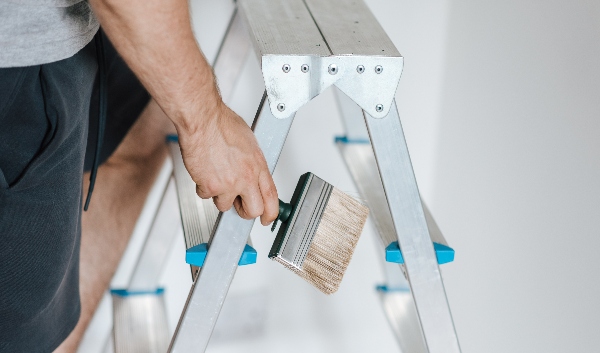
A-Frame Ladders
An a-frame ladder or a step ladder, is considered as one of the most standard models. The name comes from the shape of the ladder when it is in use as it resembles the letter ‘A’. This ladder is used for a variety of jobs, mostly carried out around the home including changing a light bulb and putting picture frames up.
The shape of the a-frame ladder makes it very stable meaning it can be placed on a variety of surfaces. To make this model even more practical, there is often a fold down shelf where users can place additional objects such as tins of paint or a toolbox. As such this type of ladder is useful in the painting and decorating industry.
Platform Step Ladders
A platform step ladder is very similar to an a-frame ladder but has the additional advantage of a large, extra strong work platform.
As well as being very sturdy and robust, this type of ladder is also very lightweight making it suitable for a variety of jobs. When workers are moving around a site, they need equipment which is practical and easy to transport which is why a platform step ladder is very useful.
Furthermore, due to the large work platform, workers can carry even more tools and equipment with them instead of having to make various trips. This enables jobs to be completed quickly and efficiently.
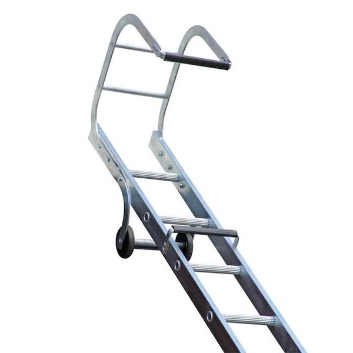
Roof Ladders
Roof ladders do what they say on the tin – they’re ladders used on a roof! They have a ridge hook at the top which rests against the opposite side of a pitched roof to hold the ladder in place.
There are bearers underneath the climbing face of the ladder which provide necessary support and also ensure there is enough space between the roof and the ladder to give a firm hand and foot hold.
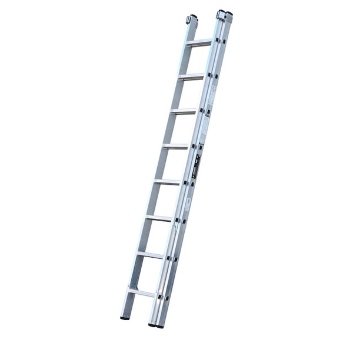
Extension Ladders
An extension ladder comprises a traditional straight ladder with additional sliding sections. It’s these sections, or extensions as they are also known, which provide extra height. These types of ladders usually come in 2 or 3 sections with each additional section overlapping the previous one to provide a range of heights.
Extension ladders are best suited for outdoor use such as guttering, as they require a structure to support them.
At YardLink, we provide various types of ladders to suit the requirements of your next project. When it comes to ladder hire, it’s useful to know where you can go if you need an extra step or two. Ladders are useful pieces of equipment and we cater for a range of rental requirements. Take a look at our full range of ladders to find one that suits your needs.
Ladder Hire Safety Tips
Ladder safety should be at the front of any project manager’s mind. As we’ve covered, accidents from ladders can be prevented by implementing the correct safety procedures from the outset. Before a ladder is used, you should carry out a pre-inspection to make sure the equipment and the surrounding area is safe for use.
The following ladder hire safety tips should act as your checklist before allowing any of your employees to carry out work which involves a ladder.
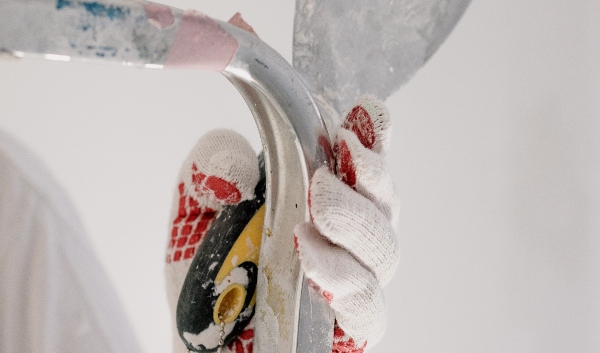
1. Select the right ladder for the job
Different types of ladders are designed to keep you safe while you’re working from them. Using the wrong type of ladder, or ignoring its limitations, can result in a fall or injury. You should start by choosing the right height of ladder so that you’re not having to overstretch or take both of your hands off the ladder frame.
Another important consideration when selecting your ladder is the material, as some are made from fibreglass whereas others are made from aluminium. Each of these materials have their own characteristics which make them better for certain applications. For example, if there are electrical wires present or there is a possibility of contact with chemicals, this should affect which material you choose.
2. Inspect the ladder before use
Before any of your team uses a ladder, it should be inspected carefully to ensure it is fit for purpose. This is especially important if the ladder has been moved from uneven or muddy terrain as this will affect the state of the steps.
Any substance which makes the ladder steps slippery or dangerous will need to be removed otherwise this could result in serious injury. Inspecting the ladder first ensures that these issues are identified and resolved before any employee sets foot on it.
Furthermore, this pre-inspections allows you to check for any damaged rungs or rails which render the ladder unsafe to use. You should also check for any loose screws or hinges as this will affect the stability of the ladder. If any of these defects are present then the ladder will need to be repaired or replaced immediately.
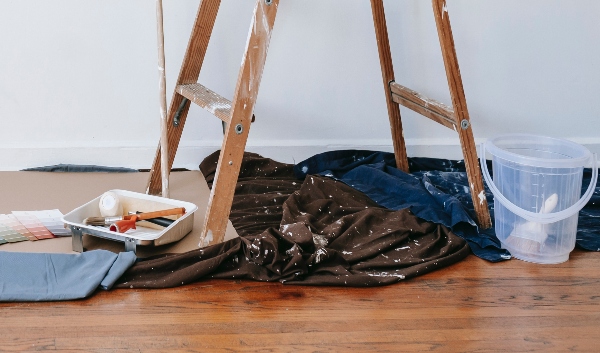
3. Be mindful of the location
Regardless of how safe the ladder is in terms of its structural integrity, it will become unsafe to use if it is placed in a dangerous location. You should always set the base of the ladder on a flat, solid surface as this makes it more stable. It’s also sensible to declutter the area around the base of the ladder to ensure it is correctly positioned and not leaning on anything soft.
Furthermore, if the ladder is positioned next to a door, make sure you block this opening to prevent anyone from walking through it.
4. Climb and descend ladders with caution
When climbing up or down the ladder, make sure you are facing forwards. Never turn your back to the ladder as you could lose your footing and miss a step. As a rule, always keep three limbs on the ladder at all times as this keeps you stable and balanced.
If you’re carrying tools then make sure these are in a tool belt. Alternatively you could use a hand line to raise and lower your tools when needed. Never take both hands off the ladder frame as this increases the risk of you falling.
5. Don’t overload the weight of the ladder
You should never overload the weight of a ladder as this could result in it tipping over. If you’re unsure of the maximum weight capacity, refer back to the ladder specifications. Whilst most types of ladders are strong enough to hold a worker, they are not indestructible pieces of equipment.
Furthermore, you need to account for any additional tools or materials that you’re carrying as this will increase the overall weight. Carrying too much can also affect your balance which is highly dangerous when climbing or descending a ladder. Be sensible when it comes to carrying loads up a ladder and only take what you can comfortably handle
6. Use for a short duration of time
Ladders are best suited to jobs which only take a small amount of time i.e. installing lighting or painting a ceiling. Compared to MEWPs, there is nothing to prevent you from falling as the user is exposed.
Therefore, this piece of equipment is most suitable for applications which require short term work or limited access. If you need a more permanent work platform to operate from, then you should consider hiring a scissor lift or a cherry picker.
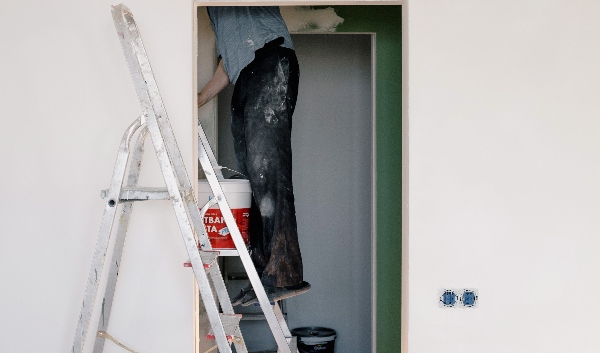
7. Stay off the top of a ladder
If you need extra height when carrying out a job, then choose a different ladder. As we’ve discussed, there are lots of different types of ladders to suit your requirements so you will not be short of options.
Never climb onto the very top of the ladder as this is not designed to be a step and it is very dangerous. In fact there is usually a sticker or a sign which clearly states ‘This is not a step.’ Do not tempt fate by stepping on the ladder and risking your safety.
Ladder Hire: Health and Safety Tips to Keep Your Team Safe
Ladder safety is vital for anyone working at height. When it comes to applications, ladders are suitable for a range of industries from construction to farming. They are highly useful pieces of equipment and can assist with a variety of tasks.
However, more important than their utility is the ability to use them safely. Failure to do so can result in a serious injury, or worst case scenario, death. By reading and understanding the above safety tips, you can be confident that your ladders are fit for purpose.
Any construction manager has a duty to keep their staff safe which includes inspecting equipment before use to resolve any issues early on. However, it’s equally important that your staff understand how to use ladders before they carry out any of their tasks. By using the above safety measures as a checklist you can be confident your team is safe.
At YardLink, we supply a range of ladders to meet the needs of your project. And with a network of local, trusted suppliers, we are the go-to solution for ladder hire and can deliver your equipment the next day! To discuss your project requirements in more detail, give us a call. We’d love to help.
YOU MIGHT ALSO BE INTERESTED IN

